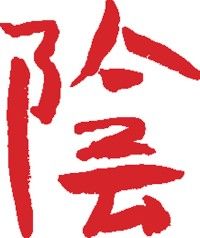Unlike its Western counterpart, traditional Chinese medicine (TCM) is based on a Taoist view that sees illness as an imbalance of "chi," the universal energy made of opposing forces, yin and yang, constantly flowing through our bodies.
Using diagnostic techniques like taking your pulse and examining your tongue, the traditional Chinese doctor can recognize the nature of the imbalance; whether there is too much yin (dark, wet, or cold) or too much yang (light, dry, hot), and develop an appropriate treatment.
Advertisement
Because Western medicine takes more of a materialist approach — relating illness only to pathogens and biological actions that can be measured or seen — the spiritual foundation of TCM makes skeptics doubt the validity of many traditional Chinese treatments, especially when these treatments include the questionable use of substances like mercury or animal bones.
Yet, the documented effectiveness of acupuncture and other TCM practices speaks for itself. So is traditional Chinese medicine science or superstition? We'll let you decide.
Chinatown's Apothecary
Before the 1970s TCM was a secret in the United States, practiced mainly by and on immigrant Chinese living in places like San Francisco's Chinatown. Here, time appears to have stood still with sights and sounds much as they were over 150 years ago, when Chinese immigrants made a home on San Francisco's steep hillsides.
Today, you can still walk into a Chinese apothecary and receive care in the way it's been done for over 4,000 years. A doctor will take your pulse and examine your tongue, supposedly all that's required for a diagnosis. He then writes out a prescription you take across the room where a clerk will pull your medicine — animal, vegetable and mineral — from the multitude of little draws built into the wall.
From this bundle of loose material you make a tea to drink, as often as prescribed. But among the leaves and roots are more questionable curatives; dried seahorses, reputed to halt hair loss and cure impotence, and lizard skins thought to improve circulation.
Similar shops can be found in every large city with a sizable Asian population, selling a whole host of dried animal parts, some like tiger bone, rhino horn and bear organs, taken from extremely endangered animals. Conservation groups say many of these treatments have all the scientific validity of wearing a rabbit's foot for good luck.
Advertisement

